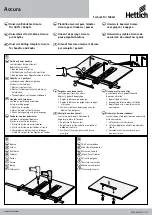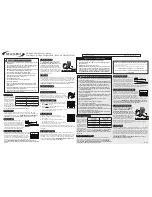
20
3BA00215 • 2016-07-11 • Rev. 3
ersa X-TOOL VARIO
6.
Functional description
6.1
Selection of the right desoldering temperature
Caution! Material damage due to high temperatures is possible!
Always select the lowest possible desoldering temperature for the task to
be performed. Please keep in mind that higher temperatures also mean
higher wear of the desoldering tip. Excessively high temperatures can also
damage the board and components.
Standard values for set temperatures:
Leaded solder set temperature
Unleaded solder set temperature
Not plated-through PCBs and
smaller components such as
resistors, capacitors and ICs
approx. 270°C
approx. 300°C – 320°C
Single-layer, plated-through PCBs
approx. 270°C – 300°C
approx. 300°C – 320°C
Multi-layer, plated-through PCBs
approx. 300°C – 330°C
approx. 330°C – 360°C
Multilayer and high-mass
components
approx. 350°C – 380°C
approx. 400°C – 430°C
6.2
Selection of the right desoldering tip
Ersa desoldering tips are modelled on the meniscus of the solder joint so as to ensure
optimal heat transfer. Select the internal diameter of the desoldering tip in such a way
that a small annular clearance of about 0.1 to 0.2 mm is left between the connection to
be desoldered and the exhaust duct, so as to be able to suction the solder residues.
6.2.1
Desoldering tip change
A desoldering tip can be changed using the tip holder fitted to the supporting stand or
the included tip changing pliers.
Caution! Risk of burns!
Desoldering tips are hot after use. Do not bring hot desoldering tips into
contact with the skin or heat-sensitive substances and objects.
Functional description









































